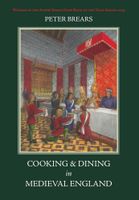Advertisement
The Counting House
Appears in
By Peter Brears
Published 2008
Throughout history, the provision of sufficient food has always been one of the major challenges facing every household, whatever its place in society. For poorer families, especially in years of bad harvest, the overwhelming need was to gather together sufficient food to ward off starvation. In contrast, great households had to assemble enough provisions to supply tens of thousands of individual meals each year, some of them of the highest culinary standard. To meet these requirements, the manorial system, which governed the everyday lives of most inhabitants of medieval England, was predominately designed to produce food and to control its distribution. In return for gaining access to land on which to grow crops, flocks and herds for their own consumption, most manorial tenants had to provide an agreed amount of labour in their lord’s fields, and often pay boon rents too. These were rents in kind, perhaps hens, geese or other produce paid at Christmas, when large quantities of food were required for the lord’s kitchens. Rents were also paid in money, much of which was used to purchase food for the maintenance of the larger households.

